About the Oak Creek Watershed Council
Oak Creek Watershed Council is a 501(c)(3) non-profit dedicated to preserving the health and integrity of Oak Creek. The important work we do is focused on public education – to help those who enjoy Oak Creek understand the consequences of their actions, and to enlist them as allies in helping us to preserve and protect this beautiful treasure.
Designated as a Federal “Unique Waterway”, Oak Creek is a part of the precious ten percent of riparian habitat that remains in the desert Southwest – the other ninety percent or more having been destroyed or seriously degraded by human activity.
Our Mission
Maintaining a standard of excellence for watershed stewardship and preserving the integrity of Oak Creek.
Our Vision
The Oak Creek Watershed Council envisions a watershed where a clean Oak Creek flows year-round supporting a harmonious balance of recreation, ecosystem functions, and sustainable community development.

Oak Creek is a perennial, spring-fed stream that stretches fifty miles from its headwaters in Oak Creek Canyon and flows through Sedona, Page Springs, and Cornville to its confluence with the Verde River. As one of the last free-running streams in Arizona, Oak Creek is a precious jewel of riparian habitat in the desert Southwest where human activity has destroyed over 90% of all rivers and streams.
With increased tourism and visitation, Oak Creek’s unique riparian ecosystem is being challenged like never before. Sedona alone gets an estimated three million visitors per year. Sadly, the result is massive increases to littering, wildlife disruption, habitat degradation, and microbial contamination. We’re here to mitigate those impacts and to ensure Oak Creek is protected for generations to come by encouraging the community and visitors to act as stewards.
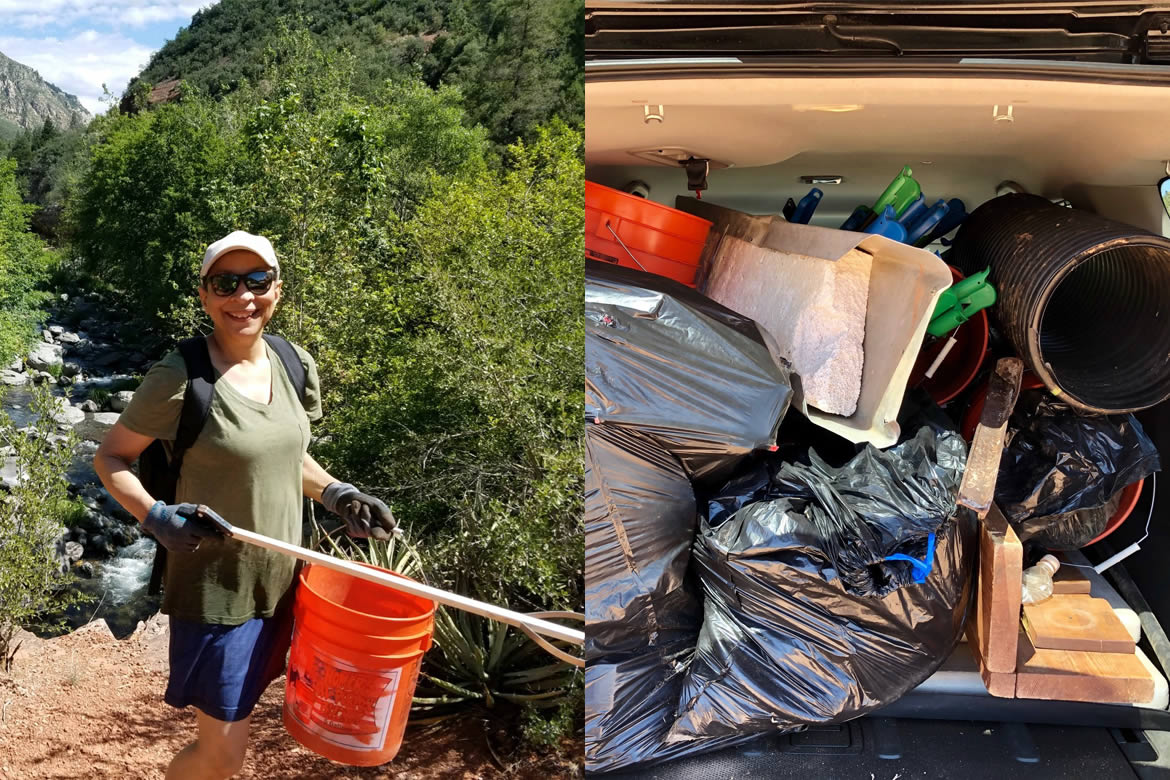
If you’d like to help preserve this beautiful natural waterway and its lush riparian habitat for the future, please consider supporting our work – either by volunteering with our organization or supporting us financially.
To protect these precious resources, we need to work together to ensure our remaining waterways remain pristine and functioning well into the future. Remember, clean water starts with you. It is a collaborative effort to protect our creeks and streams upstream because we all depend on them downstream. We all need to do our part!
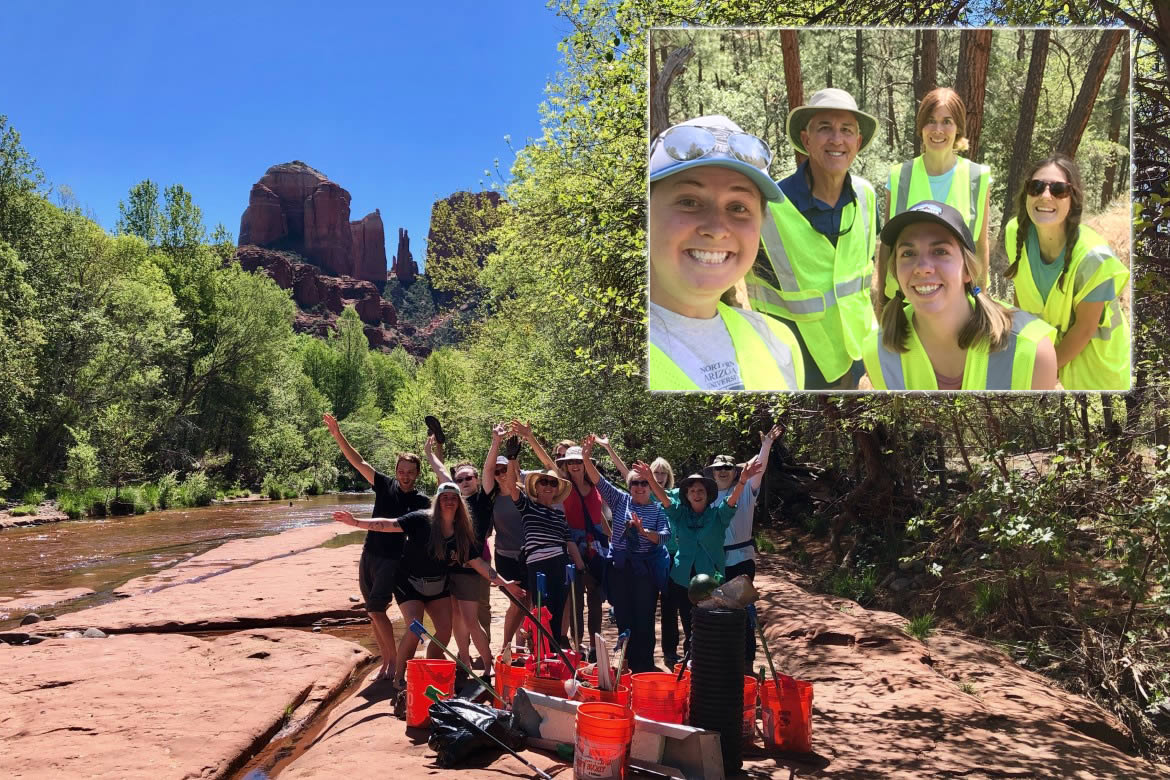
Long ago, the Oak Creek Watershed Council (OCWC) was known as the Oak Creek Canyon Task Force. A concerned group of citizens formed the group to address the increase in tourism and the impact these surplus of visitors were having on the precious riparian environment. In 2003, OCWC officially became a 501(c)(3) non-profit. As a result, a new name to better represent our efforts was given and thus, we became the Oak Creek Watershed Council. Since that time, our group has grown into the successful leader of watershed stewardship in the Sedona area.
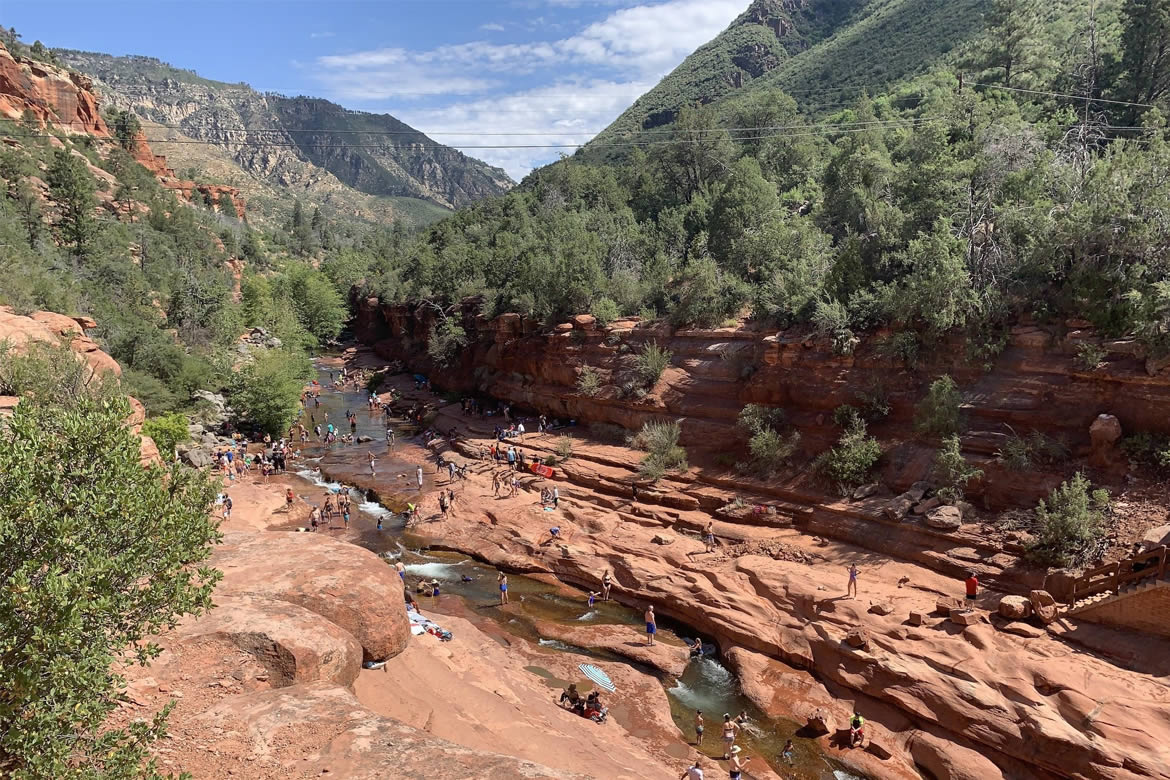
Oak Creek Watershed Council is dedicated to protecting Oak Creek and surrounding areas. What we do is so necessary. Oak Creek is truly “loved to death”. Each year, over 3 million visitors alone check into the Red Rock Ranger District Visitor Center. As you can imagine, that number is now likely a lot more. With that many people coming to such a small area, there are going to be negative impacts. We find lots of trash left behind and heavy use of social trails, resulting in frequent spikes in E. coli contamination. This is problematic because social trails increase erosion, quickly degrading water quality and wildlife habitat.
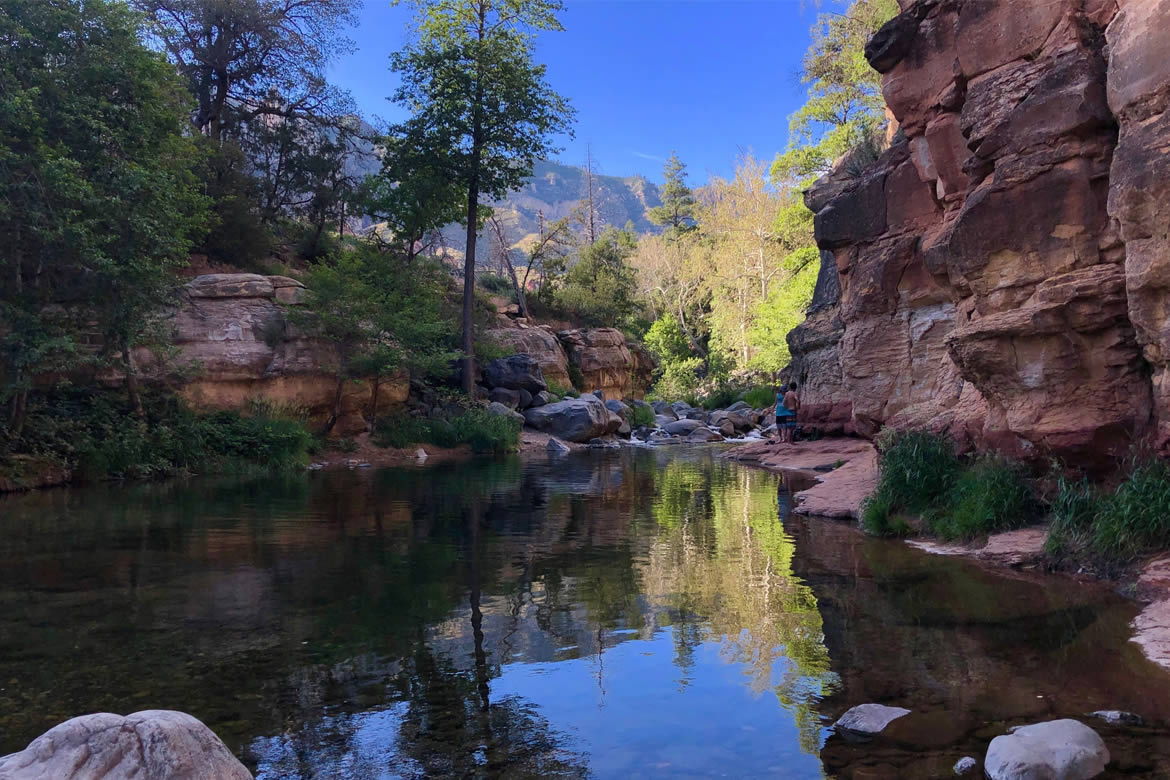
Arizona has lost up to 90% of its free-flowing water and as a result, our riparian areas are at risk because of human-use. The population is quickly growing and exceeding what this desert environment has to offer. We have less than 10% left of these rare areas, and have to do all that we can to take care of them now for future use, wildlife, and scenic beauty. In fact, we are currently seeing many creeks and streams that used to be free-flowing year round now only flow seasonally when snow melts or during heavy rains. This isn’t good for the wildlife who depend on water sources year round or for the humans downstream.

We also focus on water quality. Oak Creek is listed as impaired because it does not meet water quality standards. There too often is an exceedance in E. coli, a harmful bacteria often used as an indicator for other harmful bacteria found in freshwater. E. coli is often introduced from fecal matter. One gram of fecal matter can contain 23 million colony forming units, which can be major health concern for those recreating around Oak Creek. We find that heavy social trail use and irresponsible recreation practices that leave human, animal, and other waste behind significantly impact the amount of E. coli introduced into a waterway. Sedimentation also increases turbidity, which is the amount of debris and matter in a waterway, and has a correlation of peaks in E. Coli. Scavenger animals also heavily impact the introduction of fecal matter into the creek.
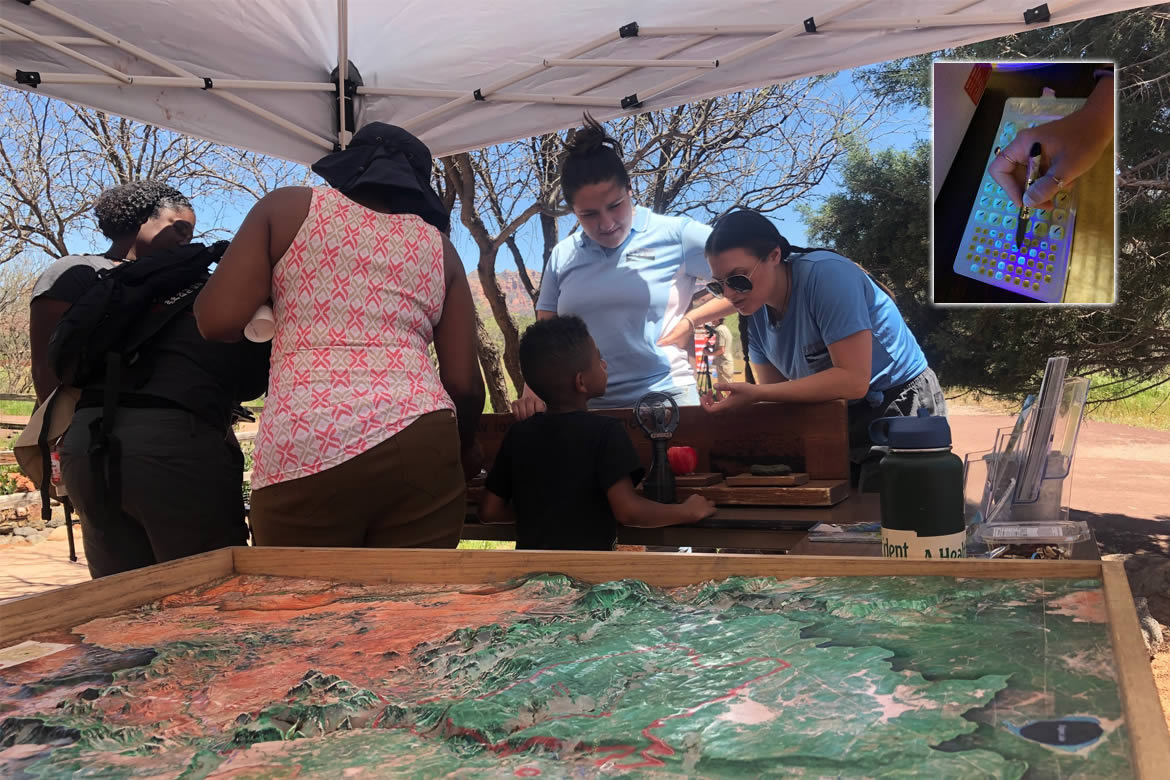
OCWC focuses our efforts on outreach and education programs to showcase watershed processes, the importance of Leave No Trace principles, and utilizing a volunteer workforce through our highly successful Ambassador program. We also work with partner agencies to monitor water quality so that we can better inform land managers on problem areas and sources of contamination.

This highly successful program has engaged hundreds of volunteers, educated thousands, and have kept over 45,000 lbs. of pet waste and trash out of the watershed.
Over the years Oak Creek Watershed Council has monitored water quality in Fossil Creek and Oak Creek in partnership with ADEQ, USFS, Slide Rock State Park, and the Chamber of Commerce. We are actively sampling in upper Oak Creek Canyon to better understand E. coli occurrence so that land managers can be better informed on contaminant sources and problem areas in the watershed.
Every gram of dog feces contains an average of 23 million E.coli bacteria, which poses a health threat for recreators swimming in Oak Creek. The PWS program identified locations within the Oak Creek corridor as potential sites for Gladiator pet waste stations. Since the program began we have kept over 25,000 lbs of waste out of the watershed!
Sedimentation occurs from erosion, which can be contributed to over-use of swimming areas along Oak Creek (stream bank erosion) and from social trails. When excessive sediment settles on the stream bottom it suffocates aquatic insects (a.k.a. benthic macroinvertebrates) that are key food prey items for fish and other wildlife. Sediment also serves as a reservoir for fecal contaminants (E. coli bacteria). Our 2017 and 2018 macroinvertebrate surveys worked to provide baseline ecological data needed for planning successful watershed and stream restoration actions.
